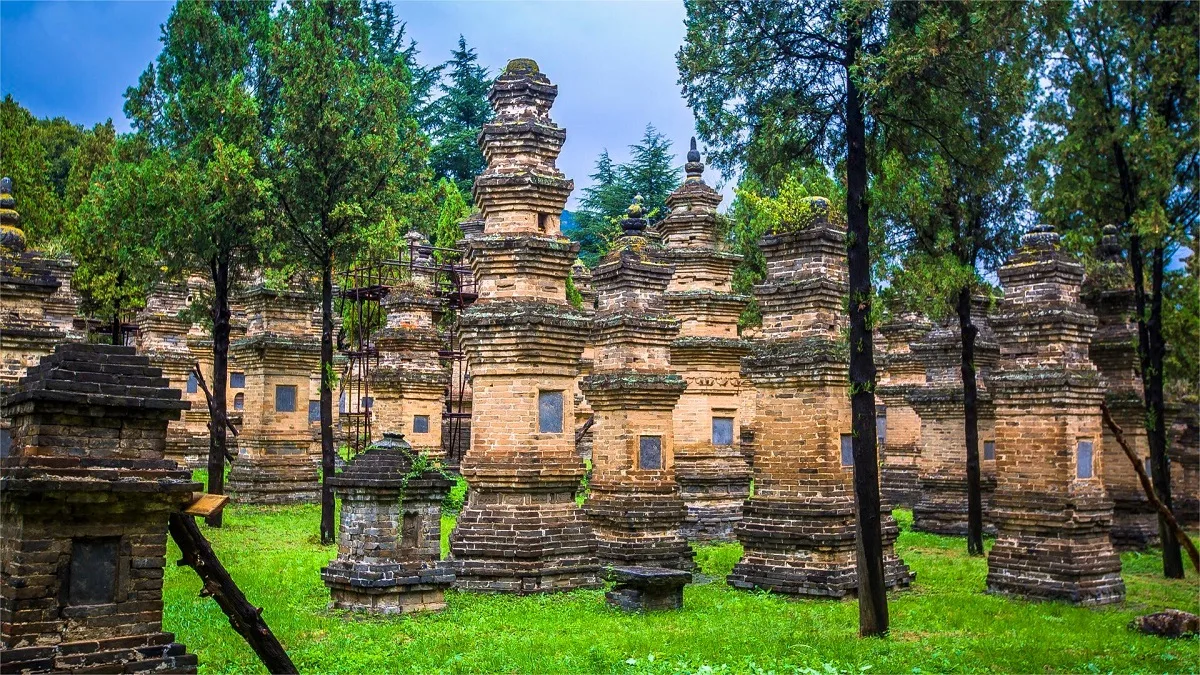The Pagoda Forest at Shaolin Temple (少林寺塔林), located at the foot of the Shaoshi Mountain in Dengfeng City, Zhengzhou, Henan Province, China, spans an area of approximately 20,000 square meters. It serves as the burial ground for the abbots and accomplished monks of Shaolin Temple throughout its history. The area is characterized by its numerous pagodas of varying sizes and shapes, giving it the appearance of a dense forest.
Origin of Buddhist Pagoda
The term “pagoda” is derived from the ancient Indian word “stupa,” which refers to a Buddhist monument or tomb. In the context of Shaolin Temple, pagodas are erected to enshrine the remains or relics of deceased monks or abbots, who made significant contributions or achievements during their lifetimes.
According to Buddhist customs and regulations, pagodas are only built for eminent monks or abbots after their passing. These pagodas serve as monuments to commemorate their merits and virtues, inspiring future generations. The hierarchy, size, and design of the pagodas in the forest reflect the status, achievements, and prestige of the deceased monks within the Buddhist community during their lifetimes.
Highlights of the Pagoda Forest at Shaolin Temple
The Pagoda Forest at Shaolin Temple preserves 241 brick and stone pagodas dating from the seventh year of the Zhenyuan reign of the Tang Dynasty (791 AD) to the eighth year of the Jiaqing reign of the Qing Dynasty (1803 AD), with 6 sites built in Tang dynasty, 1 site in Five Dynaties, 2 in Song dynasty, 8 in Jin Dynasty, 44 in Yuan Dynasty, and 143 in Ming dynasty. Notable examples include the Tang-style Fayun Pagoda, the Song-style Pu Tong Pagoda, the Jin-style Xi Tang Pagoda, the Yuan-style Zhong Lin Pagoda, the Ming-style Tan Ran Pagoda, and the Qing-style Bi An Pagoda.
The pagodas vary in height from one to seven levels, with most being under 15 meters tall. They typically feature inscriptions and ornamental plaques. The most elaborate pagodas are seven-tiered structures. These pagodas exhibit a wide range of shapes and styles, including square, rectangular, hexagonal, octagonal, and circular designs.
The Pagoda Forest at Shaolin Temple is the largest extant pagoda forest in China, serving as a valuable repository of material evidence for the study of Chinese architectural history, sculpture art, and religious development. It is often referred to as the “Museum of Ancient Pagoda Art in China.”
Other Attractions at Shaolin Temple




